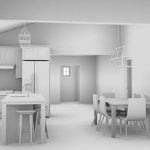A beautifully decorated garden can add a touch of charm and tranquility to any home. In this article, we will explore the essential steps on how to decorate a garden at home, from assessing your space to selecting plants and flowers, incorporating hardscape elements, adding creative decor and accents, maintaining your garden, and doing so on a budget.
Whether you have a spacious backyard or a small urban patio, creating an inviting outdoor space can enhance the overall aesthetics of your home and provide a peaceful retreat for relaxation and enjoyment.
Before diving into the fun part of decorating your garden, it’s important to first assess your space. By evaluating the size, layout, sunlight exposure, shade availability, and soil quality of your garden area, you can determine what will work best in terms of plant selection and hardscape elements. This initial step is crucial in creating a cohesive and functional outdoor space that suits your lifestyle and aesthetic preferences.
Once you have assessed your space, it’s time to create a vision for your garden. Consider different garden styles such as botanical, zen, or cottage gardens to determine what resonates with you. Drawing inspiration from various sources can help you define the aesthetic you want to achieve in your outdoor oasis. Whether you prefer a lush green haven or a tranquil Zen retreat, having a clear vision will guide you throughout the decoration process.
Assessing Your Space
When it comes to decorating your garden at home, one of the first steps is assessing the space you have available. Before you start planting or adding decorative elements, take some time to evaluate the size and layout of your garden area. Consider factors such as sunlight, shade, and soil quality to determine what will thrive in your specific environment.
Start by measuring the dimensions of your garden and sketching out a rough layout. This will help you visualize how much space you have to work with and where different elements can be placed. Take note of any existing features such as trees, shrubs, or structures that may impact your design decisions.
Next, consider the sunlight and shade patterns in your garden throughout the day. This information will help you choose the right plants for each area based on their light requirements. Additionally, assess the soil quality to determine if any amendments or specific plant selections are needed for optimal growth.
Ultimately, assessing your space is about understanding its unique characteristics and limitations so that you can make informed decisions when it comes to decorating and landscaping. By taking the time to evaluate these factors, you can set yourself up for success in creating a beautiful and thriving garden at home.
Creating a Vision
When it comes to decorating your garden at home, creating a vision for the space is an essential first step. Determining your garden style and aesthetic will guide the selection of plants, flowers, hardscape elements, and decorative accents. Whether you prefer a botanical garden filled with lush greenery and colorful blooms, a peaceful zen garden with minimalist design, or a charming cottage garden bursting with whimsical charm, it’s important to establish your vision before diving into the decorating process.
Determining Your Garden Style
To determine your garden style, take inspiration from various sources such as gardening books, online resources, and even visits to local botanical gardens. Consider the overall theme of your home decor and how you can extend that style into your outdoor space.
For example, if you have a modern and minimalist interior design, you may want to create a zen-inspired garden with clean lines and calming features. On the other hand, if your home has a cozy and eclectic vibe, a cottage garden filled with an abundance of flowers in varied colors may be more fitting.
Finding Inspiration
Gaining inspiration from different types of gardens can also help in creating your own unique vision. Botanical gardens showcasing various plant species arranged harmoniously can inspire ideas for plant selection and arrangement in your own garden. Similarly, visiting traditional Japanese Zen gardens or quaint English cottage gardens can offer valuable insights into design elements that resonate with you. By exploring these diverse styles and aesthetics, you can begin to envision how you want your garden to look and feel.
Once you have established a clear vision for your garden style and aesthetic, the next step is to move on to selecting plants and flowers that will bring this vision to life within your specific space.
By clearly defining these key aspects at the beginning of the decorating process, you can ensure that all subsequent decisions align with your overall vision for an impeccably decorated home garden.
Selecting Plants and Flowers
When it comes to decorating a garden at home, one of the most crucial elements is selecting the right plants and flowers. The plant life in your garden not only adds natural beauty but also sets the tone for the overall atmosphere. Here are some tips for choosing the perfect greenery and blooms to enhance your outdoor space.
Considering Climate and Space
Before selecting plants and flowers, it’s important to consider your local climate and the specific conditions of your garden space. Take note of factors such as sunlight exposure, shade, and soil quality. Different plants thrive in different environments, so be sure to choose species that are well-suited to your specific location.
Incorporating Color and Texture
When deciding on which plants and flowers to include in your garden, think about incorporating a variety of colors and textures. This can add visual interest and create a dynamic and vibrant landscape. Consider mixing different types of flowers with varying heights, as well as foliage with contrasting colors or patterns to create an eye-catching display.
Choosing Native Species
One sustainable approach to selecting plants for your garden is to prioritize native species. These are plants that naturally occur in the region where you live, making them well adapted to the local environment. Native plants often require less maintenance and water, making them a practical choice for environmentally conscious gardeners.
By carefully considering these factors when selecting plants and flowers for your garden at home, you can create a lush and vibrant outdoor space that is both visually appealing and well-suited to its surroundings. Whether you prefer a colorful floral oasis or a serene green retreat, thoughtful plant selection is key to achieving your desired aesthetic.
Incorporating Hardscape Elements
When considering how to decorate a garden at home, it’s essential to think about the hardscape elements that will complement your greenery and flowers. From pathways to seating areas, these elements can enhance the overall design and functionality of your outdoor space.
One important aspect to consider when incorporating hardscape elements is the material. Stone, wood, and metal are popular choices for creating pathways and garden structures. Each material offers its own unique aesthetic and benefits, so it’s important to choose based on your overall vision for the space.
In addition to pathways and structures, seating areas are another key component of hardscaping. Whether it’s a cozy bench nestled in a corner or a set of chairs around a fire pit, incorporating comfortable places to sit and enjoy your garden is crucial for relaxation and entertaining.
When planning your hardscaping, it’s essential to ensure that these elements complement your chosen plants and flowers. For example, if you have a structured garden with clean lines and modern planters, consider using metal or concrete for your hardscape elements. On the other hand, if you have a more cottage-style garden with wildflowers and charming birdhouses, wood accents may be more appropriate.
Ultimately, by carefully considering materials, layout, and functionality when adding hardscape elements to your garden, you can create an inviting outdoor space that reflects your personal style.
| Material | Advantages |
|---|---|
| Stone | Durable and low-maintenance |
| Wood | Natural warmth and versatility in design |
| Metal | Sleek modern look with longevity |
Creative Decor and Accents
When it comes to decorating a garden at home, adding creative decor and accents can truly elevate the space and make it more aesthetically pleasing. There are various ways to incorporate decorative elements into your garden to enhance its overall appeal.
One popular idea is to include garden art, such as sculptures or unique structures, to add visual interest. Another option is to incorporate a fountain or water feature, which can bring a sense of tranquility and relaxation to the garden.
In addition, using lighting in strategic ways can enhance the ambiance of your garden, especially in the evening. String lights, lanterns, and solar-powered fixtures can create a warm and inviting atmosphere for outdoor gatherings or quiet evenings in the garden. Outdoor rugs are also a great way to add color and texture while creating designated seating or dining areas within the space.
The key is to strike a balance between creativity and functionality when adding decor and accents to your garden. Finding pieces that reflect your personal style and complement the overall design of your garden will help create a cohesive look that feels intentional and well-curated. Whether you prefer a modern aesthetic or a more traditional feel, there are countless options for bringing your vision to life in your outdoor space.
| Decorative Element | Function |
|---|---|
| Garden Art (e.g. sculpture) | Adds visual interest |
| Fountain or Water Feature | Brings tranquility |
| Outdoor Lighting | Enhances ambiance |
| Outdoor Rugs | Adds color & texture; creates designated areas |
Maintenance and Care
Maintaining and caring for your garden is essential to keep it looking beautiful and thriving. Here are some tips for ongoing maintenance and plant care:
- Regular watering: Depending on the type of plants in your garden, you’ll need to establish a regular watering schedule. Some plants may require daily watering, while others can thrive with less frequent watering.
- Weeding: Regular weeding is important to prevent unwanted plants from taking over your garden. Spend a little time each week pulling up weeds to keep your garden looking neat and tidy.
- Pruning and trimming: Keep your plants healthy and looking their best by regularly pruning and trimming them. This will help encourage new growth and maintain the shape of your plants.
In addition to these regular maintenance tasks, it’s important to also consider seasonal upkeep and pest control:
- Seasonal cleanup: At the end of each season, take some time to clean up your garden. Remove any dead or decaying plants, tidy up any hardscape elements, and prepare the soil for the next season.
- Pest control: Keep an eye out for pests that may damage your plants. Look for signs of pests such as holes in leaves or chewed stems, and take appropriate measures to control them, whether it’s through natural remedies or environmentally-friendly pesticides.
- Fertilizing: Depending on the needs of your specific plants, you may need to fertilize them throughout the growing season. Research the specific fertilizer needs of your plants to ensure they have the nutrients they need to thrive.
By staying on top of maintenance and care tasks, you can ensure that your garden remains a beautiful and enjoyable space for you to relax in.
Remember that with proper maintenance, your garden can flourish all year round providing beauty without breaking the bank whilst also not wasting vast amounts of water resources.
Budget-Friendly Tips
Decorating your garden at home doesn’t have to break the bank. With some creativity and resourcefulness, you can enhance the beauty of your outdoor space without spending a fortune. Here are some budget-friendly tips on how to decorate your garden at home:
- DIY Projects: One of the most cost-effective ways to decorate your garden is by taking on do-it-yourself projects. Whether it’s building a planter box, creating a trellis for climbing plants, or making your own garden decorations, DIY projects allow you to personalize your space while saving money.
- Upcycling Ideas: Look around your home for items that can be repurposed or upcycled into garden decor. Old crates, pallets, and even discarded household items like teacups or mason jars can be transformed into unique and charming additions to your outdoor oasis.
- Shop Sales and Clearance: Keep an eye out for sales and clearance events at local nurseries, home improvement stores, and even online retailers. You can often find discounted plants, flowers, pots, and other garden accessories that will help stretch your decorating budget.
Another way to save money while decorating your garden is by prioritizing key areas for maximum impact. Focusing on specific areas within your garden where you spend the most time or entertain guests allows you to allocate resources more efficiently.
When planning under a budget for how to decorate garden at home, it’s important not to overlook nature’s own decorations. Utilize elements such as rocks, pebbles, and driftwood from nature in creative ways throughout your garden. These natural accents can add visual interest and texture without costing a dime.
By following these budget-friendly tips, you can create a beautiful and inviting outdoor space without draining your wallet. Remember that decorating your garden is a process, so take your time with each addition and enjoy the transformation of your outdoor sanctuary.
Conclusion
In conclusion, creating a beautiful garden at home is not only a wonderful way to enhance the aesthetic of your living space but also to connect with nature and enjoy the outdoors. By assessing your space, creating a vision, selecting the right plants, incorporating hardscape elements, getting creative with decor and accents, and maintaining your garden, you can easily achieve a stunning outdoor area that reflects your personal style and brings you joy.
When it comes to how to decorate garden at home, it’s important to remember that the process should be enjoyable and fulfilling. Whether you have a green thumb or are new to gardening, there are endless possibilities for creating a unique and inviting outdoor space. With careful planning and attention to detail, you can transform even the smallest of areas into a beautiful sanctuary.
Lastly, as you embark on this journey of transforming your garden at home, remember that it doesn’t have to break the bank. There are plenty of budget-friendly tips and DIY projects that can help you achieve an amazing result without spending a fortune. So, roll up your sleeves, tap into your creativity, and start planning and decorating your own garden oasis today.
Frequently Asked Questions
How Do I Decorate the Garden?
There are several ways to decorate your garden. You can start by adding colorful flowers and plants, installing outdoor lighting, or creating a small seating area with comfortable furniture. Consider adding decorative elements like sculptures or wind chimes to add visual interest.
How Do I Accessorize My Garden?
Accessorizing your garden can be a fun way to add personality and style to the space. Consider adding items like garden gnomes, bird feeders, colorful pots, or decorative stepping stones. You can also hang outdoor art or install a water feature like a fountain or pond.
How Can I Beautify My Garden?
Beautifying your garden involves enhancing its natural beauty while also adding elements that make it visually appealing. Consider planting a variety of flowers in different colors and sizes, creating well-manicured pathways, and tending to the overall landscaping. Additionally, consider adding features like trellises, arbors, or pergolas to add architectural interest and charm to the garden space.

I’m thrilled to be your companion on this exciting journey through the world of home decor and design. With a passion for turning houses into homes and a keen eye for the finer details, I’m here to help you transform your living spaces into beautiful, functional, and meaningful havens.





